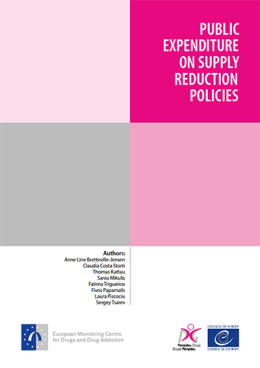Public expenditure on supply reduction policies
Introduction
Evaluating drug policy is an integral part of a cost-efficient approach to tackle illicit drugs. This report takes a first step towards a systematic analysis, by examining a set of representative attempts to estimate public expenditure on supply reduction interventions. It proposes a common set of definitions, aiming to establish a common basis for understanding this topic and facilitating comparability in three main dimensions: time, policy and countries. Although it is mainly confined to supply reduction expenditures, in order to set the context, it describes the proportion that total drug-related expenditure represents of national public spending and; presents the balance between demand and supply reduction spending for a number of European countries. Finally, with the aim of facilitating and promoting future empirical expenditure studies and of setting the ground for the development of good practices, relevant data sources and methodologies applied are listed and discussed and examples of sectorial models of public spending are selectively provided.
Download as PDF
Table of contents
- Foreword
- Executive summary
- Acknowledgements
- Introduction
- Defining concepts
- Empirical estimates of demand and supply policy expenditure
- Examples of sectorial models
- Examples of national studies
- International databases used to model drug-related public expenditure
- Conclusions
- Recommendations
- Glossary
- References
- Appendix 1: Available databases and potential indicators for drug-related public expenditures
- Appendix 2: The international Classification of the Functions of Government (COFOG)
- Appendix 3 – Summary tables: data from international databases
- Acronyms
- Table references









